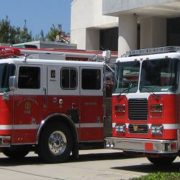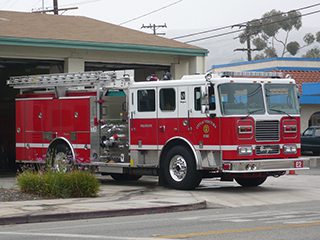Pension Spiking Approved in Police Retirement Contract

” We Must Hand Together Or Surely We Shall Hang Separately” —Thomas Paine
COUNCIL APPROVES PENSION SPIKING
[Fleecing Time – Again!]
At the Ventura City Council meeting on Monday, May 16, 2011, on a vote of 5 to 2 the Council approved to an employment contract amendment to the Ventura Police Officers Association (VPOA) and Ventura Police Management Association (VPMA) employment contracts. Mayor Fulton and Councilmen Tracy, Brennan and Morehouse voted for the amendment. Councilwoman Weir and Councilman Andrews voted against the measure.

Ventura Police negotiate with City Council to get pension “spiking”
New employment contracts for the VPOA and VPMA were approved on January 16, 2011. However, in May it was pointed out that a correction (amendment) was needed because an important detail had not been treated. “They” forgot to include essential terms in the contract concerning who was going to pay the 4 ½% pension contributions.
Recall, good reader, that this contract was hailed as a masterful accomplishment, unique in California, and that it would save the community money in the long run (Mayor Fulton and City Manger Cole) because our policemen were now going to have to pay something toward their own pension just like everybody else in the private sector.
A Pension Deal Too Good To Be True
At first blush this step was positive, albeit anemic, because in past years this Council had entered into employment contracts with the policeman whereby they entire 9% pension contribution would be paid by the taxpayer. Our Mayor Fulton and City Manger Rick Cole extolled the virtues of this new employment contract because the City of Ventura had tilled new ground by requiring the policemen to pay something toward their own retirement – 4 ½% we were told. Councilman Andrews, Councilwoman Weir and fiscal conservatives in the community argued forcefully for a 9% contribution particularly in light of an unfunded pension liability of $250 million, but we digress.
Now we learn that with this amendment of the contract terms, unlike the SEIU employees contract, the VPOA and VPMA will be paying their 4 1/2% retirement contribution toward the employers’ portion (taxpayers portion) of that is sent to the CALPERS retirement plan. This accounting maneuver is specifically done to increase the total compensation of the employee, making the retirement payout amount higher for their lifetime.
The employee’s goal is to get one year of the highest possible salary so that his retirement for life is higher – called “spiking”.
Giving Context To The Problem The City Council Created With Police Pensions
To help put this into perspective, the employers’ portion of the total annual retirement payment paid to CALPERS by the city (taxpayer) is counted as income to the employee for purpose of calculating the employees retirement benefit when they retire. The employee’s goal is to get one year of the highest possible salary so that his retirement for life is higher – called “spiking”. Until now the city has been paying the taxpayers portion (100%) plus the employee’s portion (9%) toward the CALPERS retirement for a total of 109% yearly. Now, with this contract amendment, we learn that while the 4 ½ % will be contributed by the police officer, from his salary each year, but it will be shown as a payment made by the employer (taxpayer) to CALPERS. The reality is that the employee’s annual salary will be shown as higher by 4 ½ % for purposes of calculating that police officer’s gross salary when they retire. The policeman gives up 4 ½% as his contribution now but recovers it all at the time of retirement. The taxpayer is in effect still paying 109% of what is required to be paid.

Ventura Police Officers put one over on the City Council in pension negotiations.
While some may define “spiking” as adding benefits to salaries in the last year of employment to boost up the retirement amount, this additional 9% accomplishes the same results, an inflated income for retirement formula purposes. It will even compound to a higher amount, should a three highest years plan ever be adopted.
So, why was this fact not made known publicly 4 months ago? Why was it not questioned or challenged at the May 18th meeting by any council member? Why was the CALPERS representative not questioned about the effect of this decision at the time of the January meeting? There were no questions and there was no discussion about the long-term impact to the city.
Specious Defense Of The Pension Contract
City Manager, Rick Cole, defends the contract amendment by saying that the payment by the employee into the employers’ portion of the retirement, which is then sent to CALPERS, was a non-negotiable item with the VPOA and VPMA. He also said it would make no difference because the current officers would receive retirement benefits based upon their “highest level” of compensation. That statement is true for the current workforce but what he failed to address, nor was he questioned, was how this would have affected officers hired in the future.
While the City Council remains concerned about the long-term effect of taking more general funds for street lighting, they continue to ignore the paying of 9% higher retirement benefits, which also comes from general funds in the form of payments to CALPERS, for years into the future. We can thank soon up for re-election Mayor Bill Fulton and Councilmember Carl Morehouse for this gracious contract approval.
EDITORS COMMENT
If the City Manger concedes that this 4 ½% contribution, paid through the employer’s contribution to CALPERS, was not negotiable with the police officer unions (his words not ours), then what about the taxpayer’s non-negotiable rights not to overpay and provide lavish retirement benefits to these public servants? Who then is protecting the interests of the taxpayer in this City when sitting at the negotiating table? Better to reach impasse and let these folks scramble for a new job then render the community hostage to the potential of bankruptcy. This unfunded obligation can and should be laid squarely at the feet of the council members who voted for this amendment; but, of course when it comes time to pay the bill they will be over the hill and the taxpayer will get the bill.
For more information like this, subscribe to our newsletter, Res Publica. Click here to enter your name and email address.






























